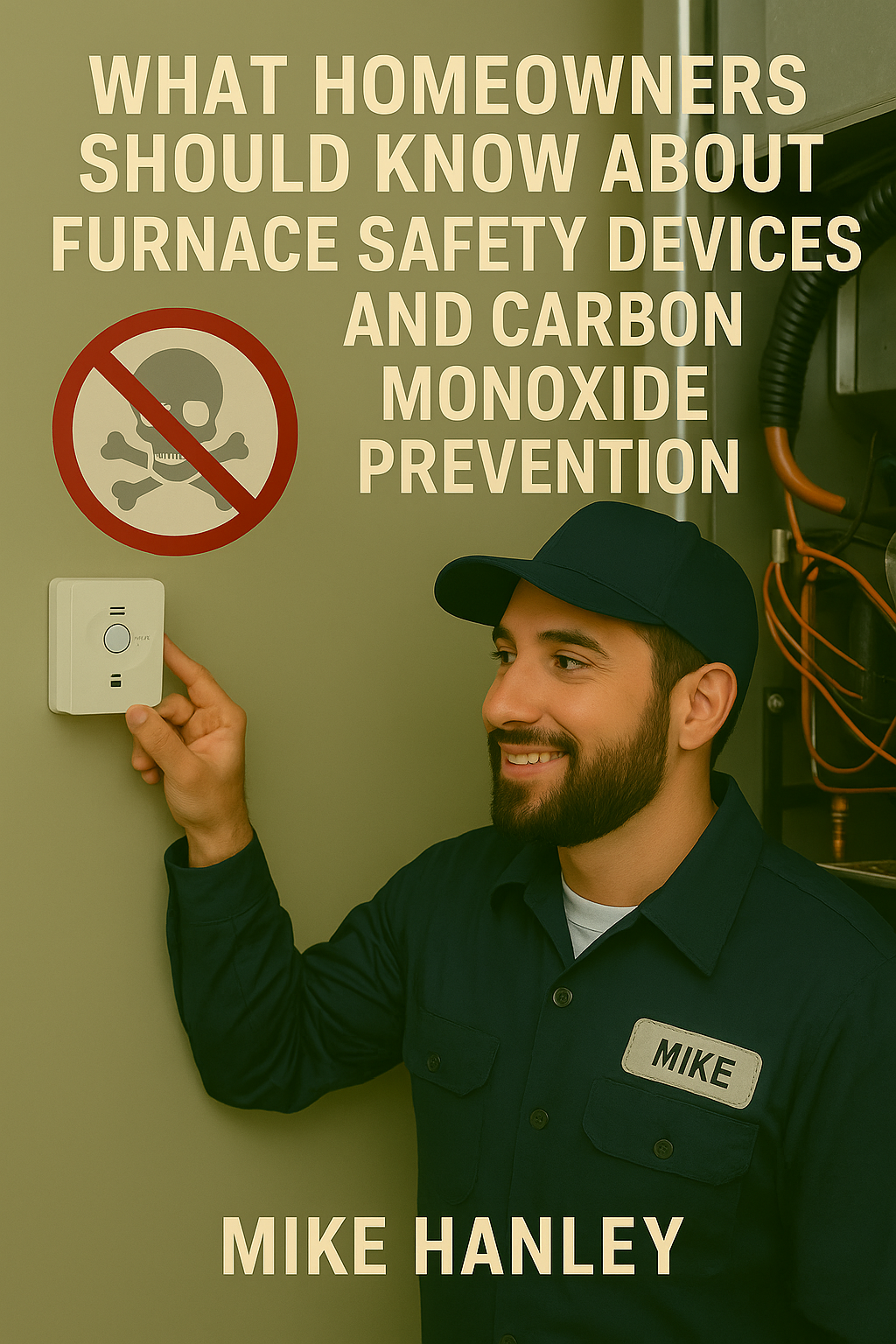📘 Table of Contents
🏠 Introduction to Why Furnace Safety Matters
Staying warm during the winter is important but staying safe is non-negotiable. When a furnace isn’t properly maintained, it can become a serious health hazard. From gas leaks to carbon monoxide exposure, ignoring routine safety checks puts your home and family at risk.
The Centers for Disease Control and Prevention reports that over 400 Americans die each year from unintentional carbon monoxide (CO) poisoning, with more than 100,000 emergency room visits related to it. A simple inspection of your furnace’s safety systems can help prevent this invisible danger.
🛠 Key Safety Devices and Their Maintenance Needs
Your furnace includes several built-in safety features that help prevent accidents. But these devices can fail or wear out over time, especially if they’re never checked or cleaned.
Here’s a breakdown of the key components and how to maintain them:
🔌 Carbon Monoxide Detectors
-
Install on every level of your home, especially near bedrooms.
-
Test once a month and change the batteries every six months.
-
Replace the unit every 5–7 years, or according to manufacturer guidelines.
🔥 Flame Sensors
-
These detect whether the burner flame is active. If it isn’t, they shut off the gas.
-
Clean the sensor annually with fine steel wool to avoid false shutdowns.
Want to learn more about HVAC sensors? Check out this comprehensive guide.
🌡 Limit Switches
-
These switches shut the furnace off if internal temperatures get too high.
-
If your system shuts off frequently, the limit switch may be worn and should be tested or replaced.
💥 Heat Exchanger
-
Cracks or corrosion can allow carbon monoxide to escape.
-
Have a technician inspect this part annually during your furnace tune-up.
For more safety tips, check out the NFPA’s heating equipment safety guide.
➡️ Want smarter control of your safety and efficiency? Check out our Thermostat collection.
📊 How to Prevent Carbon Monoxide Buildup in Your Home
Carbon monoxide is invisible, odorless, and potentially deadly, but entirely preventable with the right habits and tools.
To keep your home safe:
🛠 Schedule Annual Furnace Inspections
Hire a certified HVAC professional to check for leaks, cracks in the heat exchanger, or blocked exhaust flues.
Book a maintenance plan that includes a safety check.
🧠 Install Smart CO Detectors
Modern detectors can send alerts to your phone even when you're not home. They also track CO levels over time for more data-driven safety.
Consumer Reports offers a reliable CO detector buying guide.
🌬 Ensure Proper Ventilation
Check that flue pipes and exhaust vents are clear of snow, nests, or debris. Any blockage can cause CO buildup indoors.
🚫 Avoid DIY Burner Adjustments
Adjusting furnace burners or modifying gas flow is not safe without proper training. Leave it to the professionals.
🚨 Watch for Symptoms
Early signs of CO exposure include headaches, fatigue, nausea, and dizziness. If these appear suddenly, evacuate the area and seek help.
Visit the EPA’s Carbon Monoxide Safety Guide.
➡️ Want to learn more about long-term maintenance? Read the Furnace Longevity Guide.
✅ Key Takeaways and Next Steps
Here’s a recap of how to stay safe and proactive:
-
Safety devices like flame sensors and limit switches need regular inspection.
-
Replace your carbon monoxide detectors every few years and test them often.
-
Prevent carbon monoxide issues by inspecting vents, avoiding DIY fixes, and scheduling annual professional tune-ups.
➡️ Next: Humidifier and Indoor Air Quality Upkeep
🔙 Back to Main Topic: How to Maintain Your Furnace for Long-Term Use
❓ FAQ
Q: Where should carbon monoxide detectors be installed?
A: Place them on every level of your home, especially outside bedrooms. They should also be near fuel-burning appliances, but not too close to vents or windows.
Q: How do I know if my heat exchanger is cracked?
A: Look for soot near the burner, a strange smell, or rust on the unit. A certified technician can inspect it with specialized equipment.
Q: Can a dirty flame sensor cause furnace shutdowns?
A: Yes. A dirty flame sensor might fail to detect a flame and shut off the system as a precaution—even when there’s no real danger.
Q: What signs suggest carbon monoxide poisoning?
A: Symptoms include headaches, dizziness, nausea, and confusion. If multiple household members feel sick at the same time, especially in winter, suspect CO exposure.
Q: Are plug-in CO detectors enough for safety?
A: Plug-ins work well, especially when they include a battery backup. However, you should also have hardwired or smart detectors for added protection and alerts while you're away.







